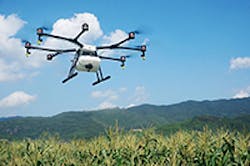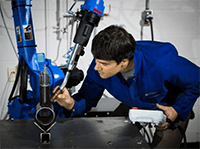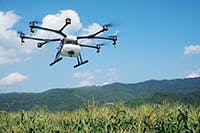Manufacturing Predictions 2016: Hype-Free Edition
The biggest, or at least loudest, manufacturing narrative so far in the 2010s has been the major advancements in robotics, 3D printing, and the Internet of Things, which couldn’t be more different in form and function. The first handles material, the second creates it, and the last is sort of like the force for machines, but instead of midi-chlorians, the deus ex machina is 6LoWPAN.
They do, however, all share quite a few traits: the ability to boost performance, productivity, and profits. Depending on who you ask, they’ll make more jobs or take all the jobs, too. At the very least they will disrupt, the “it” buzzword of last year.
Take our coverage of additive manufacturing, for example. Some of the events did warrant excitement, such as the introduction of the AgieCharmilles AM S 290 Tooling Additive Manufacturing machine that juxtaposes a direct metal laser sintering machine with a milling machine. The streamlined process could slash cycle times by 60%, claims Gisbert Ledvon, director of business development at GF Machining Solutions.
Other news bordered on what a few decades ago may have been deemed miraculous, such as the series of prosthetics stories detailing how 3D printers have improved the lives of kids born with congenital defects. They also teetered on the edge of saccharine puffery, but if it inspired an engineer or two to look into the e-Nable organization, it was totally worth it.
But then I go and write about 3D-printed homes for hermit crabs. At that point, if someone 3D-printed a shark, I probably would have jumped it. What this tells me is that it’s very easy to get sucked into the hype. Hype is great water cooler (or is it Keurig, now?) fodder, but if you’re making the decisions, practical information is more valuable. So for 2016, my buzzword of choice is going to be pragmatism.
Taking that into account, here are a few of my pragmatic predictions for 2016.
1. Every business will need to reevaluate their IoT security
If you had a house party as a teen, you know not every attendee can be trusted, yet they all have access to your family’s valuables, or at the very least they pose the risk of soiling your carpet in some horrific manner. It’s the same with Internet-connected devices in your workspace. You have to be the host and the bouncer. And the problem may not be with blocking the front door, but with guests who are already there.
source: Cisco/ Identity Services Engine
“You have to rethink about the interior of your network from a protection point of view,” says Scott Harrell, Vice President of Product Management, Cisco Security Business Group. “Historically the industry has spent a lot of time focused on perimeter. The challenge is the individual devices on your network. If I’m an adversary and I get a hold of one node, I can generally move around your network at free will.”
He advises everyone gets acquainted with and implements software-defined segmentation. Cisco Identity Services Engine collects telemetry and creates a normal profile for, say, a thermostat, and determines what it is supposed to do, assigning Security Group Tags to segment the network. This prevents malware that breaches a compromised device from lateral movement.
To go back to my banal, albeit apt analogy of the house party, if a stumbling, slurring guest is trying to use your parents’ bathroom, the door will automatically lock and prevent access. If a thermostat is acting “phishy,” then that too would be locked out, preventing access to H.R. files or expensive machinery.
[Ed. Note: We will go more in-depth into IoT security in our February issue.]
2. Humans and Collaborative Robots Will Co-Exist Peacefully
ISO/TS 15066, the proposed standard safety requirements for collaborative robots, is slated for approval this year. The industry-approved standards will clearly define and safeguard technical operations such as safety-rated monitored stop; hand guiding; speed and separation monitoring; and power and force limiting.
source: Robotiq/ Kinetq Teaching Solution
Why is this important? According to the International Federation of Robotics, from 2015 to 2018, factories around the globe will install an estimated 1.3 million new industrial robots. Collaborative robots will account for an increasing percentage of that number, yet, “you can’t walk into a user facility and anybody would have a comprehensive understanding of what they should be doing with these products,” says Jeff Burnstein, President of the Robotic Industries Association.
He says the new standards will help clarify and lead to a safer work environment. For instance, if a co-bot’s arm has a needle or sharp instrument attached, this will instruct on safe distance to prevent a worker from being injured.
“We have those standards for industrial robots,” Burnstein says. “This will be the first consensus standard on how they should be safeguarded.”
3. More Work, Less Play for Drones
Expect drones to become a bigger part of smart farming this year. They really have nowhere to go but up, as only 90 of the first 1,355 commercial drones seeking FAA approval were for agricultural, according to Piper Jaffray Investment Research. Despite this paltry initial number, the Association of Unmanned Vehicle Systems International predicts that in the next ten years, agriculture drones will account for 92% of U.S. commercial drone economic impact, which is estimated to be $82 billion.
One of these mechanical worker bees may hit the field in Asia this year. The DJI Agras MG-1 is dust proof, waterproof, and corrosion resistant. The Chinese-made Agras can carry 2.6 gallons of liquid for crop-spraying and can cover between seven and 10 acres per hour. DJI says it is over 40 times more-efficient than manual spraying.
The eight-rotor machine can fly up to eight meters per second and adjusts spraying intensity to flying speed, ensuring even coverage. After it refills its payload, it uses microwave radar to automatically return to the spot it stopped. It also has semi-automatic and manual modes. It’s estimated to cost $15,000, though no date has been set for release in America.
The implementation of a more economical way to grow food couldn’t come at a better time. The UN’s Food and Agricultural Organization says that the world’s food production must increase by 70% to meet the demand of the 9.6 billion inhabitants
What all this means is that security, safety and efficiency will undergo some major innovations in 2016. And our mission within these pages this year, as in every year, is to empower you with the tools, both physical and mental, to operate a company built on sound principles, not noisy ones.
If you have any manufacturing predictions, please leave them in the comment section below!
About the Author
John Hitch
Editor, Fleet Maintenance
John Hitch, based out of Cleveland, Ohio, is the editor of Fleet Maintenance, a B2B magazine that addresses the service needs for all commercial vehicle makes and models (Classes 1-8), ranging from shop management strategies to the latest tools to enhance uptime.
He previously wrote about equipment and fleet operations and management for FleetOwner, and prior to that, manufacturing and advanced technology for IndustryWeek and New Equipment Digest. He is an award-winning journalist and former sonar technician aboard a nuclear-powered submarine where he served honorably aboard the fast-attack submarine USS Oklahoma City (SSN-723).




